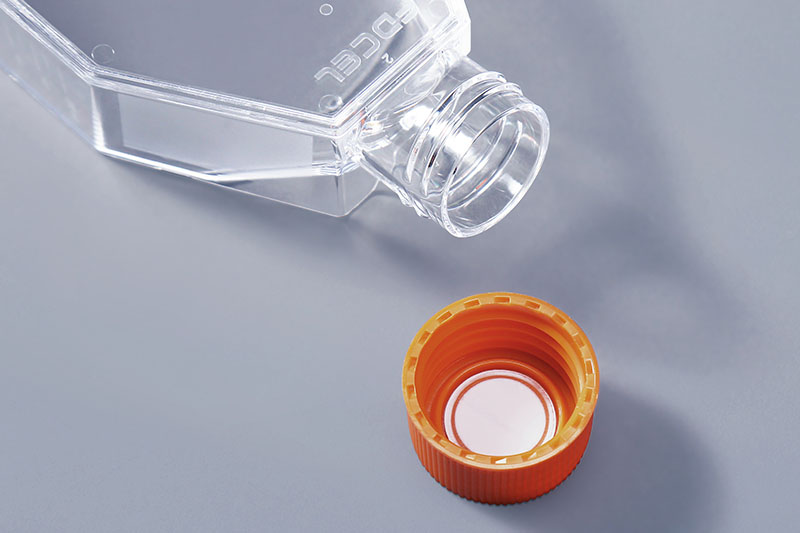Cell culture refers to a method that simulates the in vivo environment in vitro, allowing it to survive, grow, reproduce and maintain its main structure and function. Cells require specific conditions to grow. What are the conditions required for culturing cells in cell culture flasks?
1. sterile environment
Nontoxicity and sterility are the primary conditions for culturing cells in vitro. Cultivating cells in cell culture flasks lacks the protection of the body's immune system and loses the ability to defend against microorganisms and detoxify harmful substances. In order to ensure that cells can grow and reproduce in vitro, it is necessary to ensure a sterile working area, good Personal hygiene, sterile reagents and media, and aseptic handling.
FuDau T25 Cell Culture Flasks
2. Appropriate temperature
Generally, the suitable temperature for mammalian and avian cells to be cultured in vitro is 37-38°C. Unsuitable ambient temperature will affect the growth of cells.
3. Appropriate osmotic pressure
Hypertonic or hypotonic solutions can cause cells to fold, swell, and burst. Therefore, osmotic pressure is one of the important conditions for culturing cells in vitro. Most cells cultured in vitro have a certain tolerance to osmotic pressure. In practical applications, an osmotic pressure of 260-320 mmol/L can be applied to most cells.
FuDau T75 Cell Culture Flasks
4. Gas environment and pH
The in vitro culture of cells requires an ideal gas environment. Oxygen and carbon dioxide are necessary conditions for cell survival. Oxygen participates in the tricarboxylic acid cycle of cells, providing energy for cell survival, metabolism and synthesis; carbon dioxide is not only a metabolite of cells, an essential component for cell growth, but also related to maintaining the pH of the culture medium. The suitable pH range for most cells is often 7.2 to 7.4. In the open culture, 5% carbon dioxide gas ratio is appropriate.
The above are the four conditions for cell growth in cell culture flasks, and are also necessary factors to ensure the good growth of cells. We should pay special attention to aseptic operation when operating to avoid contaminating cells.
The FAI climbed 5.9 percent year-on-year in the first 11 months of 2018, quickening from the 5.7-percent growth in Jan-Oct, the National Bureau of Statistics (NBS) said Friday in an online statement.
The key indicator of investment, dubbed a major growth driver, hit the bottom in August and has since started to rebound steadily.
In the face of emerging economic challenges home and abroad, China has stepped up efforts to stabilize investment, in particular rolling out measures to motivate private investors and channel funds into infrastructure.
Friday's data showed private investment, accounting for more than 60 percent of the total FAI, expanded by a brisk 8.7 percent.
NBS spokesperson Mao Shengyong said funds into weak economic links registered rapid increases as investment in environmental protection and agriculture jumped 42 percent and 12.5 percent respectively, much faster than the average.
In breakdown, investment in high-tech and equipment manufacturing remained vigorous with 16.1-percent and 11.6-percent increases respectively in the first 11 months. Infrastructure investment gained 3.7 percent, staying flat. Investment in property development rose 9.7 percent, also unchanged.
 English
English




















































